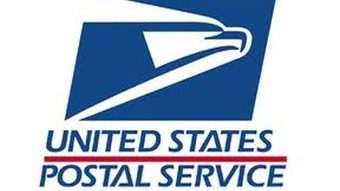As pressure mounts on Congress to bail out the U.S. Postal Service to the tune of $85 billion in total relief, the USPS needs to show its hand and prove to America whether or not COVID-19 is the true source of its financial troubles.
Many influential voices— including the Washington Post Editorial Board— have pointed to the fiscal deterioration of the USPS ($69 billion lost in recent years) and questioned how responsible it would be for Congress to write a check without first requesting some operational changes to achieve “a more permanent fix.” But first the Postal Service must prove itself deserving of the funds by showing a clear correlation between USPS’ projected COVID-19 impact and its bailout demands. Especially now that the Administration is pushing to combine the agency’s $10 billion credit line extension with key postal reforms, no bailout money should be awarded until USPS exercises complete fiscal transparency and produces the data to back up its dire claims.
With this blitz for systemic change gaining momentum in Washington, here are three more specific pragmatic elements of the USPS to address:
Refurbish internal operational inefficiencies
Consistent with The Post’s guidance, there are options to reorient the Postal Service into a leaner operation on its own— without the government stepping in. This includes looking at closing or consolidating underutilized postal facilities and potentially developing new products, provided that they pass muster through robust screening to ensure that the fiscal benefits outweigh the costs.
Further items include repairing protocols and compliance for postal management of contractors, use of scheduler tools, equipment purchasing, postage reselling, and more. Endeavors like these, which the USPS can implement on its own, are projected to save at least $3.2 billion annually. With a litany of internal elements to correct, it is a certifiable a myth by doomsayers that privatization would be on the horizon for the USPS. Simply ensuring that leadership’s guidance is applied throughout the organization, while also rooting out waste and abuse are instrumental to keeping it thriving as an independent entity.
Determine the truth about competitive products and packages: Drain or Gain?
The USPS has continually considered package delivery to be a ‘bright spot’, but it is essential for lawmakers, the Administration, and the public to know exactly what this means as the agency reports an increase in parcel delivery (1.6 million in volume, and $7 million in revenue) in recent troubling periods.
Under package profitability assumptions by the USPS, it must be determined how $13 billion of pandemic-induced losses would occur in the midst of a package surge. Per USPS reports, packages show an operating ratio of 65% – translating to 35 cents in profit per dollar of revenue. Thus, assumptions show that any losses elsewhere in the postal system should be covered by gains in packages.
A decline in First-Class Mail volume is extraneous to the equation as it is consistently the Postal Service’s most profitable base of products with revenues exceeding costs by a 2 to 1 margin. For USPS to deliver less mail in the current period only means a reduction in available revenue for USPS to financially support (cross-subsidize) other Postal products – like competitive items and parcels with ballooning systemic losses as a result of excessive costs.
The Postal Service cannot claim fiscal pandemic damage on one hand, and then also tout positive impact of parcels. For these reasons, a sensible solution is for lawmakers and Administration to pursue an ‘open book’ approach with full accounting transparency in which it is entirely clear how competitive costs are defrayed in the system.
Adapt to Evolution in Technology and Consumer Demand
Further leaning on recommendations of The Post, the post office could prepare for phasing out mandatory Saturday mail delivery, which USPS claims could save $2 billion per year. For many years the Postal Service has struggled to meet its own objectives in timeliness for First-Class Mail despite the ongoing concerns raised by its regulator.
Reducing the extent of weekend delivery would help the Postal Service to finally achieve the savings that it expected to accrue in recent years after eliminating single-piece overnight FCM service and shifting some mail from a 2-day to a 3-day service standard. During this initiative, the USPS only realized 5.6 percent of the projected savings of $1.61 billion for both years. Oversight of the Postal Service has also sought to accelerate the formation of strategies designed to mitigate threats to volume and to engage with the newly dominant digital communications industry in order to help to protect First-Class correspondence mail and make it relevant once again for future generations.

